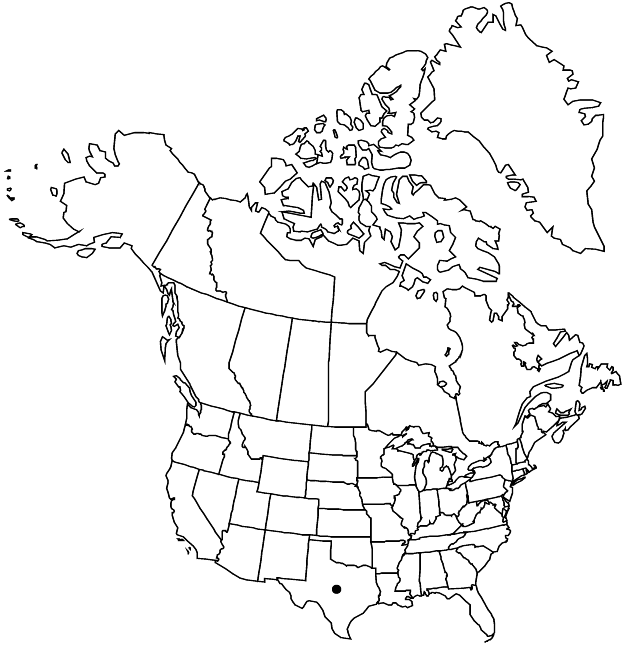Eriogonum correllii
Sida 3: 198, fig. 1. 1968.
Herbs, erect, 1.5–3.5 (–4) × 0.5–1 dm, tomentose. Stems: caudex absent; aerial flowering-stems erect, stout, solid, not fistulose, arising directly from a taproot, (0.5–) 1–2 dm, tomentose. Leaves basal, not in rosettes; petiole 4–10 cm, tomentose to floccose; blade lanceolate to elliptic, (2–) 4–12 (–15) × 1–3.5 cm, densely white-tomentose abaxially, floccose or glabrous and green adaxially, margins entire, plane. Inflorescences compound-umbellate, 5–15 (–20) × 3–10 (–12) cm; branches tomentose; bracts 3–6, leaflike at proximal node, 1–4 × 0.5–1.5 (–1.8) cm, often scalelike distally. Involucres 1 per node, turbinate to campanulate, 3–5 × 2–4 mm, tomentose; teeth 5–7, erect or slightly spreading, 0.3–0.6 mm. Flowers (2.5–) 3–7 mm, including 1–1.5 (–2) mm stipelike base; perianth bright-yellow, densely pubescent; tepals dimorphic, those of outer whorl lanceolate to elliptic, 2.5–5 × 1.5–2.5 mm, those of inner whorl elliptic to fan-shaped, 4–7 × 2–3.5 mm; stamens exserted, 3–5 mm; filaments pilose proximally. Achenes light-brown to brown, 3.5–6 mm, glabrous except for sparsely pubescent beak. 2n = 40.
Phenology: Flowering Jul–Oct.
Habitat: On clayey flats and mounds, mesquite communities, oak and juniper woodlands
Elevation: 400-1000 m
Discussion
Eriogonum correllii is known from a few scattered locations in northern Texas (Armstrong, Briscoe, Floyd, Foard, Hardeman, Knox, and Oldham counties). Published references to this species (R. B. Kaul 1986) being in Oklahoma were based on specimens of E. jamesii var. jamesii.
Selected References
None.
Lower Taxa
"dm" is not declared as a valid unit of measurement for this property."dm" is not declared as a valid unit of measurement for this property."dm" is not declared as a valid unit of measurement for this property.
